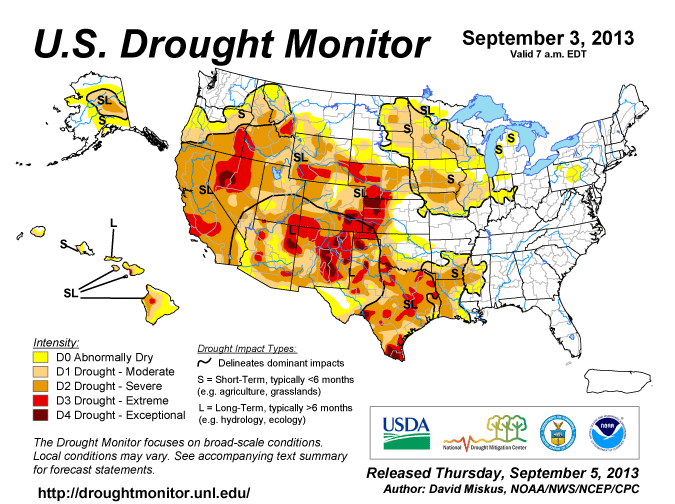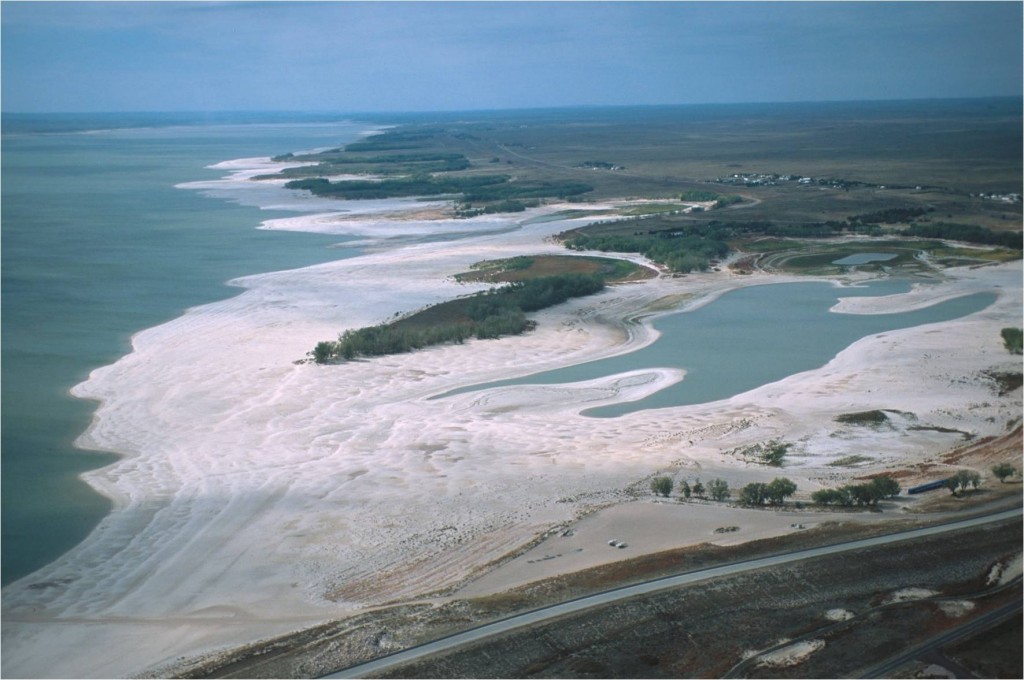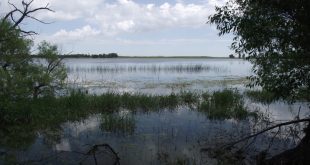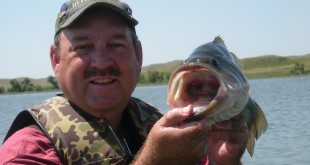I have made the statement before, will make it again right now. . . . WATER will be THE issue of this century for western states including Nebraska. Some of us are accused of being “chicken littles” because when we have a wet year, like we had in 2011, everyone forgets that many of our water resources are already being tapped at a maximum sustainable rate or more! When we get a dry year, like 2012, everyone remembers that we still have the same water issues, that they have not gone away.
This year has been a little better than last year, but we have had some dry weather in many parts of the state and overall, much of Nebraska still remains in a drought.
This has a direct impact on our fisheries resources and our outdoor recreation. Projections I am hearing for next year do not sound good:
Central Nebraska Public Power and Irrigation District News Release
This is a long-term problem that has already severely impacted some states, and could have significant impacts, more significant than what we have already seen, here.
I also would include links to these stories, but the Keith County News is still working on its website ( Keith County News ). Here is a copy of a story that was sent to me,
Keith County News 8/26/13
By JEFF HEADLEY
News Co-Publisher
Cory Steinke, Central Nebraska Public Power and Irrigation District civil engineer, said sustaining water in Lake McConaughy may not be possible under current inflow conditions.
Since the lake reached its all-time low of 3,197.6 feet above sea level on Sept. 14, 2004, it gained in elevation until it reached a peak of 3,264.9 feet above sea level on July 17, 2010. It took about six years for the lake to gain 67.3 feet from its 2006 low to its 2011 peak.
From there, Lake McConaughy has been steadily decreasing in elevation. Lake Mac reached a peak of 3,255.4 feet in 2012 and 3,242.6 feet earlier this year.
Steinke projects Lake McConaughy will finish the current irrigation season at 3,224.3 feet above sea level, or at about 760,000 acre-feet.
Central is working to receive a waiver from the U.S. Fish and Wildlife Service that could save between 1 to 1-1/2 feet during the winter “fill” months, Steinke said.
Under a non-waiver projection, Lake McConaughy is expected to reach 3,230.4 feet above sea level at the end of March 2014 and is expected to drop to about 3,213.4 feet by the end of the 2014 irrigation season.
Under a waiver scenario, Lake Mac is projected to fill to about 3,232 by late March and be down to about 3,215 feet by the end of the irrigation season.
The 2014 irrigation season is expected to end about the same time it ends this year, toward the middle or end of September, Steinke said.
Central’s directors may approve 2014 water allocations as soon as their next meeting. Central’s board usually meets on the first Monday of each month, but because the first Monday in September is Labor Day, the board will meet on Sept. 3.
Steinke said Lake McConaughy’s declining elevation stems from loss of upstream inflows.
“McConaughy lives on return flows, not snowpack,” Steinke said. “We are constantly losing inflows and we (Central officials) are concerned about Lake McConaughy as a sustainable water source going forward.”
Steinke said he doesn’t expect any “spills” from the Wyoming reservoir system any time soon. The system, which includes the larger reservoirs of Seminoe and Glendo, currently needs about 1.7 million acre-feet to reach maximum levels.
And, with outflows continuing through the remainder of the summer, “that gap gets even bigger,” Steinke said.
An average annual snow pack run-off event for the Wyoming system is about 1.4 million acre-feet, meaning even with an average snow pack run-off next year, the Wyoming system won’t be able to fill itself, much less provide “spills” for downstream systems, Steinke said.
Central’s civil engineer said to maintain Lake Mac water levels, downstream needs must be cut or the lake will need increased inflow levels.
Steinke said Central has made conservation efforts and water efficiency improvements downstream during the past several years, but inflows continue to sag well below normal.
Inflows into Lake Mac, Steinke said, have averaged about 30 percent of normal during the summer months, and should these type of inflows continue, will be not be enough to sustain Lake McConaughy in the coming years.
“We’re trying to make it last as long as possible, but we have either got to have increased inflows or decrease our outflows further,” Steinke said.
While Steinke said Central officials are concerned about Lake McConaughy as a water source for irrigation to central Nebraska crops, moisture totals in that part of the state have been significantly down during the past two years, exacerbating the situation.
Steinke said last year, which produced record low moisture levels across the entire state, central Nebraska received just 9-1/2 inches of moisture during the growing season. This year hasn’t proved much better, with about 10-1/2 inches reported so far this growing season.
Along with that news story was an editorial that I want to share with you,
Keith County News Editorial 8/26/13
Serious problems again loom on the horizon for Lake McConaughy as the never-ending battle of water coming in versus water going out continues.
Mother Nature has been less than generous with the water supply the past two years and Lake McConaughy’s elevations again have suffered.
Lake Mac is expected to finish the irrigation season at 3,224.3 feet above sea level. Currently, the lake is at 3,227 feet.
The winter fill is projected to put Lake Mac into the 3,230s by the end of April, with a projected low of 3,213.4 feet at the end of the irrigation season in 2014.
If those scenarios are projected correctly, and Central officials are usually close when it comes to projections, the lake will be just about 16 feet from its all-time low elevation at the end of 2014. Lake Mcconaughy’s capacity is 3,265 feet above sea level.
It is surprising that little has been done at the state level to assure the state’s largest recreation area has an adequate supply of water.
While the lake was constructed and put into service as an irrigation resource more than 70 years ago, uses do and priorities should change during the course of time.
Recreation considerations have become a larger issue than they were 50 years ago and those considerations should carry more weight in this discussion. A million visitors in 2012 can’t be wrong and those voices shouldn’t be ignored.
Lake Mac is a resource, and just like any other resource, it is not in the best interest of the population to deplete that resource to near empty. We can’t understand why others can’t grasp that concept.
We have crossed this bridge several times during the past 20 years and continue to make no progress on assuring an adequate supply of water in Lake Mac – hoping and praying that Mother Nature will solve the problem.
Hoping and praying do not constitute a legitimate plan, nor does using all available conservation measures when the supply gets low.
Central officials are anticipated to act on water allocations during its next meeting. We expect the board will take an allocation of water, even though it may be less than what it wants.
After next year, should Mother Nature again be stingy with water, the situation again will become dire for Lake McConaughy.
The time for serious discussions for a minimum pool at Lake McConaughy is overdue.
As the water wars rage in the coming years, I worry. Will there be any water left for fish & wildlife and outdoor recreation?
 Nebraskaland Magazine
Nebraskaland Magazine





